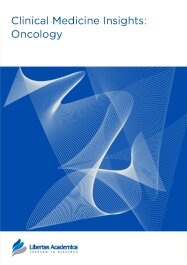

Publication Date: 03 Sep 2014
Type: Original research
Journal: Clinical Medicine Insights: Oncology
Citation: Clinical Medicine Insights: Oncology 2014:8 101-105
doi: 10.4137/CMO.S16835

In this prospective phase II clinical trial, multiple myeloma (MM) patients were randomized to receive a second (tandem) autologous stem cell transplantation (ASCT) based on whether they achieved a partial response or worse (≤PR) following initial ASCT (ASCT1). Patients who achieved a very good partial response or better (≥VGPR) had salvage ASCT at relapse. Seventy-five patients received conditioning therapy and ASCT1. A total of 44 patients (59%) achieved ≥VGPR, whereas 31 patients entered ≤PR and were offered tandem ASCT. In all, 20 patients agreed to tandem ASCT. Demographic and clinical characteristics were similar between the two cohorts except for median lactate dehydrogenase (LDH) (P = 0.0141) and percentage of marrow plasma cells before ASCT1 (P = 0.0047), both lower in the ≥VGPR group. Intent to treat analysis showed that patients who achieved ≥VGPR to ASCT1 had a trend toward improved progression-free survival (PFS) (37 vs. 26 months, P = 0.078) and superior overall survival (OS) (not reached vs. 50 months, P = 0.0073). Patients with ≤PR who declined tandem transplantation had shortened PFS (20 vs. 28 months, P = 0.05) but similar OS (53 vs. 57.5 months, P = 0.29) compared to those who received it. Thus, a favorable clinical response to ASCT1 identifies a low-risk group with superior long-term prognosis despite similar PFS.
PDF (549.82 KB PDF FORMAT)
RIS citation (ENDNOTE, REFERENCE MANAGER, PROCITE, REFWORKS)
BibTex citation (BIBDESK, LATEX)
XML
PMC HTML


My experience publishing in 'Clinical Medicine Insights: Oncology' was excellent. I was impressed with the quick review and proof-read processes. The electronic submission website is user friendly, and the continuous manuscript status updates received from the journal were helpful in tracking the progress of the paper.
Facebook Google+ Twitter
Pinterest Tumblr YouTube